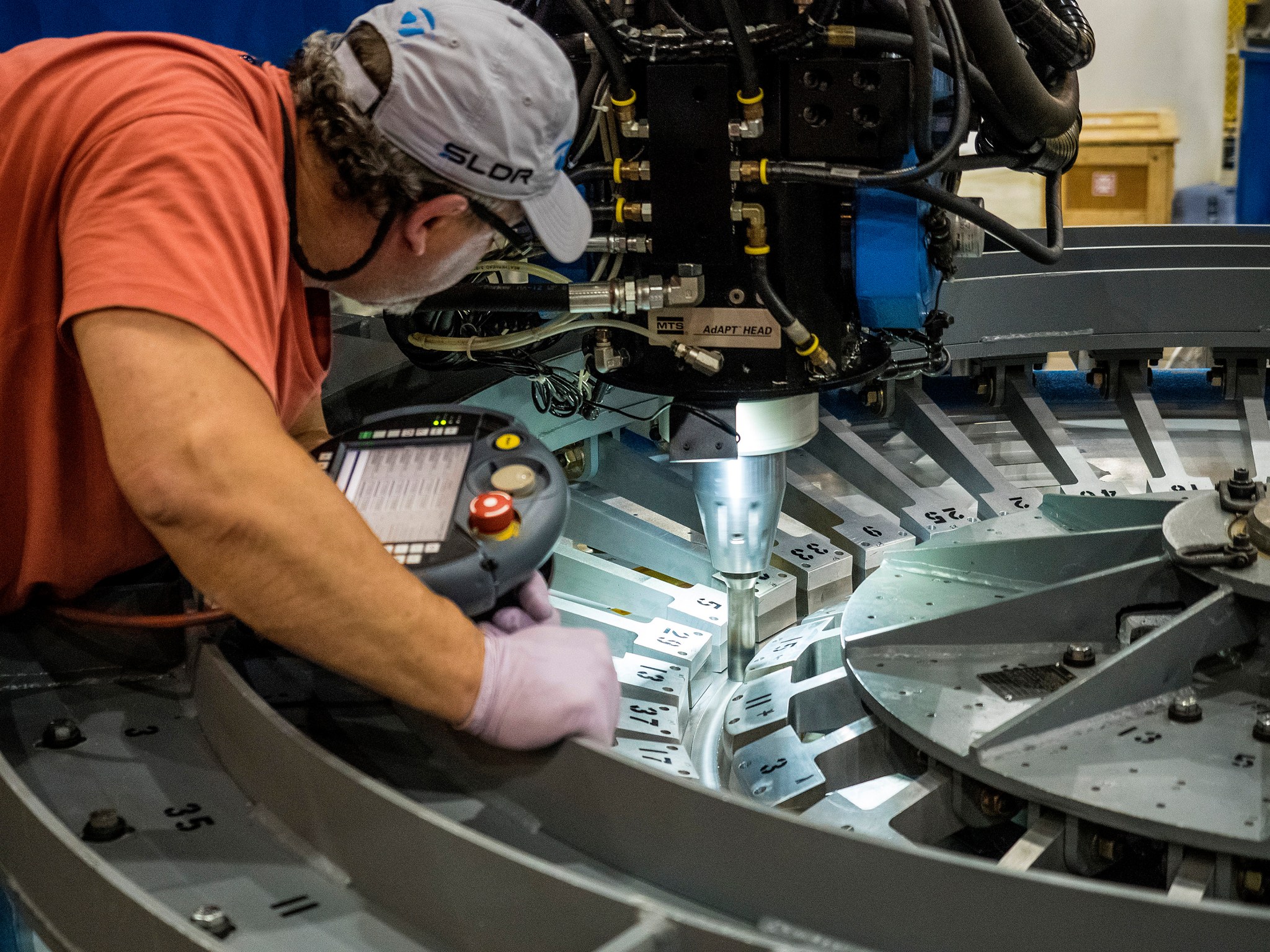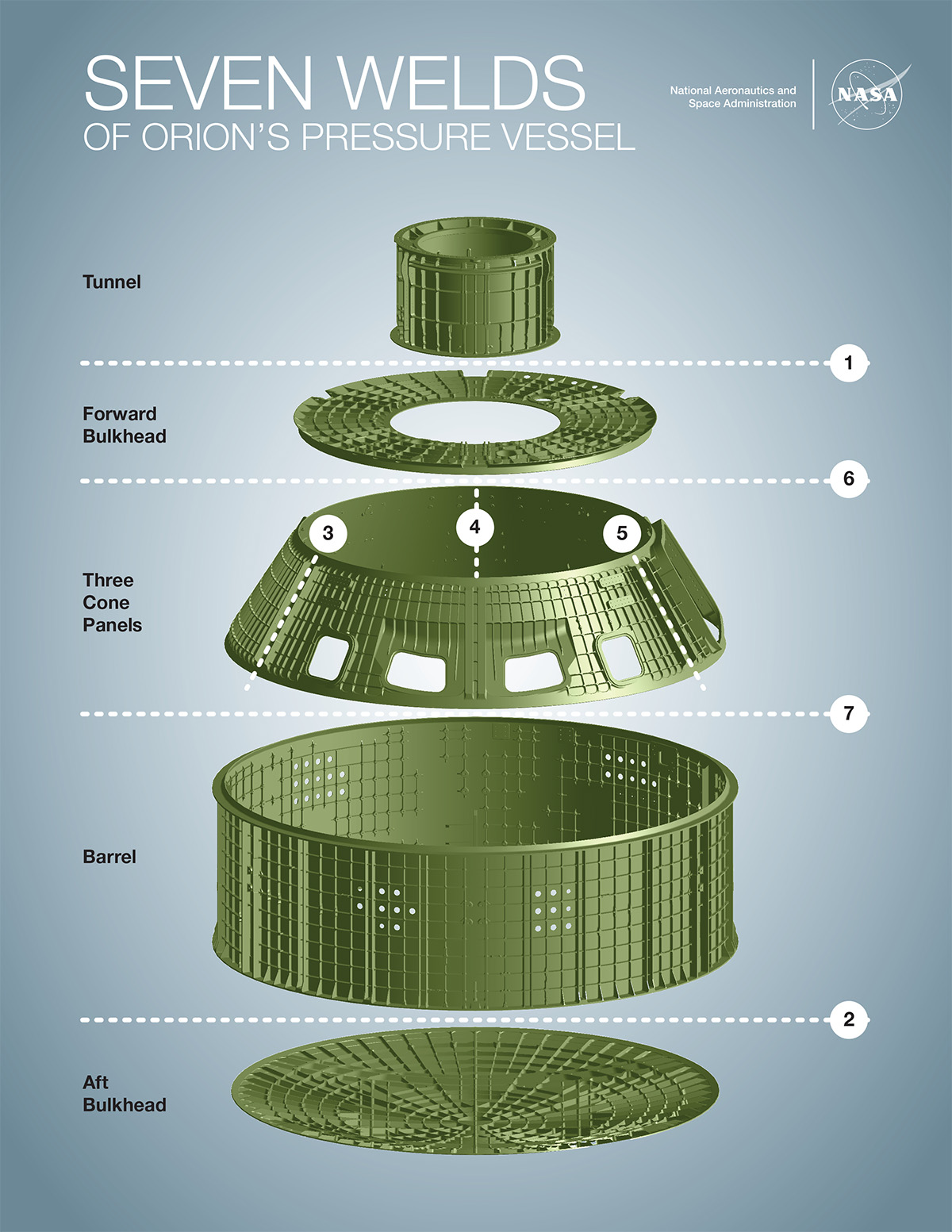NASA is another small step closer to sending astronauts on a journey to Mars. On Saturday, engineers at the agency’s Michoud Assembly Facility in New Orleans welded together the first two segments of the Orion crew module that will fly atop NASA’s Space Launch System (SLS) rocket on a mission beyond the far side of the moon.
“Every day, teams around the country are moving at full speed to get ready for Exploration Mission-1 (EM-1), when we’ll flight test Orion and SLS together in the proving ground of space, far away from the safety of Earth,” said Bill Hill, deputy associate administrator for Exploration Systems Development at NASA Headquarters in Washington. “We’re progressing toward eventually sending astronauts deep into space.”
The primary structure of Orion’s crew module is made of seven large aluminum pieces that must be welded together in detailed fashion. The first weld connects the tunnel to the forward bulkhead, which is at the top of the spacecraft and houses many of Orion’s critical systems, such as the parachutes that deploy during reentry. Orion’s tunnel, with a docking hatch, will allow crews to move between the crew module and other spacecraft.
“Each of Orion’s systems and subsystems is assembled or integrated onto the primary structure, so starting to weld the underlying elements together is a critical first manufacturing step,” said Mark Geyer, Orion Program manager. “The team has done tremendous work to get to this point and to ensure we have a sound building block for the rest of Orion’s systems.”
Engineers have undertaken a meticulous process to prepare for welding. They have cleaned the segments, coated them with a protective chemical and primed them. They then outfitted each element with strain gauges and wiring to monitor the metal during the fabrication process. Prior to beginning work on the pieces destined for space, technicians practiced their process, refined their techniques and ensured proper tooling configurations by welding together a pathfinder, a full-scale version of the current spacecraft design.
NASA’s prime contractor for the spacecraft, Lockheed Martin, is doing the production of the crew module at Michoud.
Through collaborations across design and manufacturing, teams have been able to reduce the number of welds for the crew module by more than half since the first test version of Orion’s primary structure was constructed and flown on the Exploration Flight Test-1 last December. The Exploration Mission-1 structure will include just seven main welds, plus several smaller welds for start and stop holes left by welding tools. Fewer welds will result in a lighter spacecraft.
During the coming months as other pieces of Orion’s primary structure arrive at Michoud from machine houses across the country, engineers will inspect and evaluate them to ensure they meet precise design requirements before welding. Once complete, the structure will be shipped to NASA’s Kennedy Space Center in Florida where it will be assembled with the other elements of the spacecraft, integrated with SLS and processed before launch.
For more information about Orion, visit:
https://www.nasa.gov/orion
-end-
Kathryn Hambleton
Headquarters, Washington
202-358-1100
kathryn.hambleton@nasa.gov
Rachel Kraft
Johnson Space Center, Houston
281-483-5111
rachel.h.kraft@nasa.gov

























